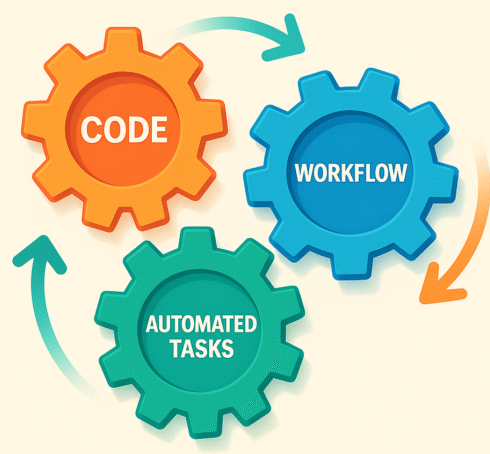In today’s fast-moving digital world, keeping your data safe in the cloud is no longer optional—it’s foundational. Before we dive into definitions and checklists, let’s look at why protecting your cloud data is such a strategic imperative and what you’ll learn in the sections ahead.

What Is Cloud Data Protection?
Definition: Cloud data protection is the set of policies, technologies, and processes that safeguard data across its cloud lifecycle—at rest, in motion, and in use—whether on public, private, or hybrid platforms.
Below you’ll find the main areas where cloud data protection applies:
- Storage: Protecting data at rest in services like Amazon S3 buckets, Azure Blob Storage, or managed databases.
- Applications: Ensuring SaaS platforms (e.g., Salesforce, Microsoft 365) and your own cloud-hosted apps enforce access controls and encryption.
- Backups & Snapshots: Creating point-in-time copies that you can restore if something goes wrong.
- Logs & Archives: Securing audit trails and immutable records for compliance and forensic investigations.
Why Cloud Data Protection Matters
When you move critical data to the cloud, you gain scalability and agility—but you also introduce new risks that can’t be ignored. Below, we frame the pressures driving organizations to take cloud data protection seriously, then break down the key drivers with hard numbers.
Why you can’t wait: Without a solid protection strategy, exponential growth in cloud data, tightening regulations, costly breaches, and sprawling multi-cloud architectures can combine to create an outsized risk to your business—and your reputation.
- Exploding Cloud Data Volumes
- Today, roughly 60 % of corporate data lives in the cloud—double the share from 2015, as companies shift everything from archives to real-time databases off premises (Source: Exploding Topics)
- Sky-High Growth Projections
- Cybersecurity Ventures predicts that by 2025, cloud-hosted data will reach 100 zettabytes—about half of all data in the world—further increasing your attack surface if it isn’t properly secured (Source: cybersecurityventures.com)
- Cybersecurity Ventures predicts that by 2025, cloud-hosted data will reach 100 zettabytes—about half of all data in the world—further increasing your attack surface if it isn’t properly secured (Source: cybersecurityventures.com)
- Regulatory & Compliance Pressures
- Laws like GDPR (EU), CCPA (California), HIPAA (health), and PCI-DSS (payments) impose strict data-handling, breach-notification, and audit requirements. Falling out of compliance can lead to heavy fines and operational restrictions.
- Laws like GDPR (EU), CCPA (California), HIPAA (health), and PCI-DSS (payments) impose strict data-handling, breach-notification, and audit requirements. Falling out of compliance can lead to heavy fines and operational restrictions.
- Rising Cost of Breaches
- In 2023, the average cost of a single data breach climbed to $4.45 million, a record high driven by longer detection times, regulatory penalties, and remediation efforts (Source: upguard.com)
- In 2023, the average cost of a single data breach climbed to $4.45 million, a record high driven by longer detection times, regulatory penalties, and remediation efforts (Source: upguard.com)
- Multi-Cloud & Hybrid Complexity
- 88 % of organizations are now running hybrid or multi-cloud environments, which can multiply misconfiguration risks and policy gaps unless you maintain consistent controls across platforms(Source: blogs.idc.com)
- 88 % of organizations are now running hybrid or multi-cloud environments, which can multiply misconfiguration risks and policy gaps unless you maintain consistent controls across platforms(Source: blogs.idc.com)
Together, these trends underscore why building a comprehensive, proactive cloud data protection program is no longer optional—it’s essential to safeguard your business in the cloud era.
Shared Responsibility Model
Before choosing tools, you need to know who does what. Cloud providers secure the underlying infrastructure, but customers own the security of their data and applications.
| Cloud Provider | You (the Customer) |
| Manages physical data center security | Encrypt data at rest and in transit |
| Maintains host operating systems and hypervisors | Configure identity and access management (IAM) |
| Ensures availability of network and hardware layers | Apply application-level protections (WAF, CSPM) |
| Handles hardware lifecycle (replacements, disposal) | Manage encryption keys and access controls |
By understanding these boundaries upfront, you can focus your Claritech-backed investments on the areas you truly control.
Key Data Protection Components
Your data exists in three states—at rest, in transit, and in use—and each requires different safeguards. Below we introduce each state, explain why it matters, then list the core controls.
- Data at Rest: When data sits in storage, encryption prevents unauthorized access even if disks or snapshots are stolen.
- End-to-end AES-256 encryption (e.g., Amazon S3 server-side encryption)
- Storage hardening: immutable buckets and versioning
- End-to-end AES-256 encryption (e.g., Amazon S3 server-side encryption)
- Data in Transit: As information moves between clients, services, or data centers, you must guard against interception or tampering.
- TLS 1.2+ for all API calls and web traffic
- Private network endpoints and VPN tunnels
- TLS 1.2+ for all API calls and web traffic
- Data in Use: Data in memory or during processing is vulnerable to advanced attacks; specialized techniques can protect it without halting performance.
- Tokenization and format-preserving encryption
- Secure enclaves (AWS Nitro Enclaves, Azure Confidential Computing)
- Tokenization and format-preserving encryption
Additionally, you should build in automated backups and integrity checks—for example, using geo-redundant snapshots and cryptographic hash verifications to detect corruption.
Top Cloud Data Protection Challenges
Even seasoned teams struggle with these recurring issues. Here’s why many organizations turn to Claritech’s experts for proactive monitoring and rapid remediation:
In every cloud deployment, you’ll bump up against visibility gaps, configuration mistakes, and evolving threats. If you can’t see your data, misconfigure permissions, or manage encryption keys, you’re essentially flying blind—and attackers know it.
- Data sprawl and lack of visibility
- Misconfigurations & overly permissive access
- Varied regulatory requirements across regions
- Complex multi-cloud key management
- Inconsistent security policies between platforms
- Increasingly sophisticated ransomware and insider threats
Best Practices for Cloud Data Protection
To stay ahead of risks, you need a strategy that combines architecture, processes, and tools. We’ll first set the stage with a short overview, then show you a table summarizing each practice:
Getting started: Adopting zero trust, encrypting all data, and automating compliance monitoring will form the backbone of your protection framework.
| Practice | Benefits | Tools & Frameworks |
| Zero Trust Architecture | Minimizes lateral movement and unauthorized access | NIST SP 800-207; CIS Cloud Controls |
| Encrypt Everywhere | Ensures confidentiality even if systems are breached | AWS KMS, Azure Key Vault, Google Cloud KMS |
| Continuous Compliance Monitoring | Detects policy drift before it becomes an issue | Prisma Cloud CSPM, Microsoft Defender for Cloud |
| Role-Based Access Control (RBAC) | Enforces least-privilege, reducing blast radius | AWS IAM, Azure AD, Okta |
| Automated Backup & Recovery | Guarantees rapid restoration and business continuity | Veeam Backup, Druva, native cloud backup services |
Claritech can help you integrate these practices into your existing workflows, ensuring you maintain best-in-class defenses without disrupting operations.
Tools & Technologies Overview
You don’t need to hunt through a thousand vendors. Here are the key solution categories and what role they play:
- Cloud Encryption & Key Management
Platforms like AWS KMS and Azure Key Vault let you centrally manage keys, define usage policies, and rotate secrets automatically. - Data Loss Prevention (DLP)
Tools such as Microsoft Purview and Google Cloud DLP inspect data flows, detect sensitive information, and block unauthorized exfiltration. - Cloud Security Posture Management (CSPM)
CSPM solutions (e.g., Palo Alto Prisma Cloud) continuously scan your environment for misconfigurations against frameworks like CIS Controls. - Cloud Workload Protection Platforms (CWPP)
Agents from CrowdStrike or Trend Micro secure virtual machines and containers, providing host-level defense and anomaly detection. - Cloud Access Security Brokers (CASB)
CASBs like Netskope sit between users and cloud services to enforce granular policies on file sharing, downloads, and SaaS usage. - Backup & Disaster Recovery
Tools like Veeam and Druva ensure you can restore data points or entire systems quickly in the event of a failure or attack.
Step-by-Step Implementation Guide
Getting from zero to a hardened cloud takes planning. Here’s your roadmap—follow these steps and partner with Claritech for expert support at every stage:
- Discover & Inventory – Use automated scanners to locate every data store, bucket, and log source.
- Classify & Label – Apply tags like “Confidential” or “PII” so policies can follow the data.
- Define Policies – Draft rules for encryption, retention, and access that align with GDPR, CCPA, and other requirements.
- Deploy Technologies – Roll out DLP, CSPM, CASB, and key-management tools in your environment.
- Monitor & Respond – Integrate with SIEM (e.g., Splunk, Azure Sentinel) and configure alerting and incident playbooks.
- Review & Optimize – Schedule quarterly audits against ISO/IEC 27018 and CIS benchmarks, adjusting as your environment evolves.
Business Benefits
When implemented correctly, cloud data protection delivers tangible value:
- Reduced Breach Risk & Faster Recovery: Minimize downtime and data loss.
- Simplified Compliance Reporting: Automated logs and encrypted archives make audits smoother.
- Greater Operational Visibility: Real-time dashboards show your security posture at a glance.
- Improved Customer Trust & Brand Reputation: Demonstrate your commitment to data privacy.
- Lower Insurance & Penalty Costs: Insurers reward strong controls with reduced premiums.
FAQs
1. What’s the difference between cloud encryption and cloud backup?
Encryption protects your data’s confidentiality, while backups ensure you can recover deleted or corrupted information. Both are essential layers of defense.
2. How does shared responsibility affect my compliance tasks?
Providers secure the infrastructure; you secure your data, applications, and configurations. To meet GDPR or HIPAA, you must enforce controls on encryption, access, and monitoring.
3. Can one tool cover all my multi-cloud needs?
Many CSPM and CASB platforms support AWS, Azure, Google Cloud, and popular SaaS apps. However, you’ll often pair those with native services like AWS KMS for the strongest coverage.
4. How often should I rotate encryption keys?
Best practice is at least once per year for symmetric keys and every two to three years for asymmetric keys—or more frequently if your policy demands.
5. What is zero trust, and how does it protect data?
Zero trust architecture removes implicit trust, requiring continuous authentication and authorization for every user, device, and data request—greatly reducing the risk of lateral attacks.
6. Which frameworks should guide my cloud data protection efforts?
Start with NIST SP 800-53/800-207, ISO/IEC 27001/27018, and the CIS Cloud Controls; they provide comprehensive checklists and best practices.
Conclusion
Cloud data protection is a continuous journey, not a one-and-done project. By weaving together clear policies, proven technologies, and regular audits—and with Claritech’s managed IT services by your side—you’ll build a resilient, compliant, and transparent cloud environment that drives confidence for your customers, auditors, and internal teams.



